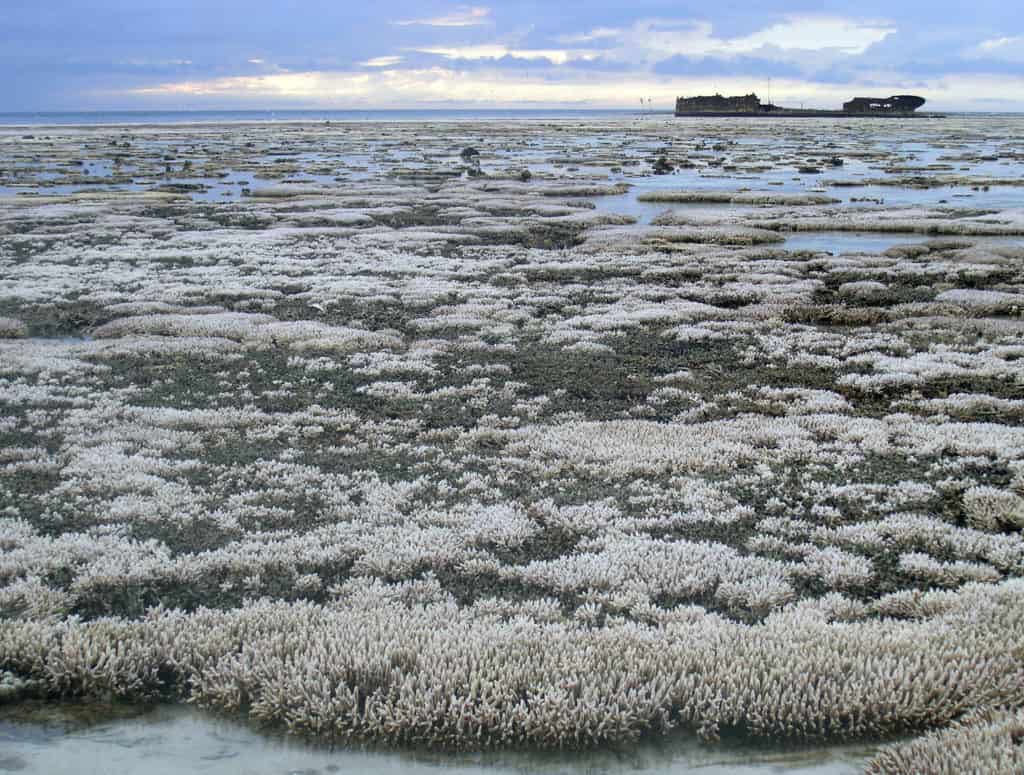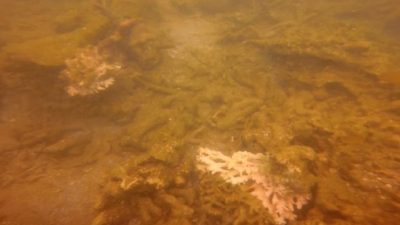
Australia’s Great Barrier Reef is yet another testament to the critical and widespread damage of warming temperatures. The latest data from aerial surveys conducted by the Australian Research Council reveal that nearly two-thirds of the reef has been devastated by bleaching. Additionally, more than fifty percent of coral in the northern reef has died; a region previously known as the most “pristine”.
Bleaching occurs when the balance between symbiotic algae and coral is disrupted by rising ocean temperatures. In an emergency state, the coral expels algae, thereby causing it to whiten. When it loses the energy-synthesizing effects provided by algae, the coral is much more vulnerable to damage from disease and predators.
“The bleaching is caused by record-breaking temperatures driven by global warming,” reported Terry Hughes, director of ARC Center of Excellence for Coral Reef Studies. Further evidence asserts that this latest wave of warm water has caused more coral to die than other major bleaching events, such as those that occurred in 1998 and 2002. Since industrialization, the world has warmed overall by 1.8°F (1°C). Projections are that coral will become entirely extinct when we hit 2.7°F (1.5°C).
Coral is more than just an asset to scenery, biodiversity and the ocean’s ecosystem. The Great Barrier Reef is a vital component of Australia’s economic health. A study from 2013 estimated “the value-added economic contribution of the Great Barrier Reef World Heritage Area to the Australian economy in 2011-12 was $5.68 billion and it generated almost 69,000 full-time equivalent jobs.”
Another factor causing coral death is extreme weather episodes, such as El Niño Southern Oscillation and Cyclone Yasi in 2011. Most recently Cyclone Debbie desecrated the reef at Queensland Islands as it whirled around slowly for an entire 48 hours. Because of prior damage from bleaching, the now beat-up and broken coral is less likely to heal itself.

Still, there is a long list of threats to the ocean that are caused by humans. Heavy rains cause chemical runoff from agriculture, contributing to dangerously increased levels of nitrogen. Displaced sand and sediment from nearby construction blocks sunlight from reaching the coral. Carbon dioxide uptake is leading to ocean acidification, and geoengineering programs overthrow biodiversity by growing massive amounts of plankton in order to release the carbon.
These factors, coming in overwhelming succession, offer the coral no time for recovery. According to scientists at the ARC center, even the fastest growing corals need at least a decade to fully recover. The Australian government has spent well over $30 million dollars to aid its repair. As expressed by Jules Howard of the Guardian, “Coral reefs can recover. There is reason for hope, therefore. Hope, but not complacency.”


